Most Wanted Components of the Decade: Digital

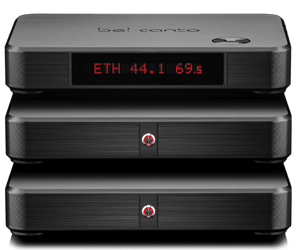
Bel Canto Design – Black System (Ultimate Amplification System, $55,000): This is by far this company’s top-of-the-line, tour deforce, system of electronics comprised of their highly acclaimed Asynchronous Stream Controller (i.e., ASC2) and PowerStream monoblocks (MPS1). These units are designed from an integrated operational approach and are linked together via AT&T fiber optic cabling, thus reducing the need for more traditional interconnects. Operationally, the units require minimal power consumption and are intended to be left on continuously and for instantaneous maximum performance. In addition to providing truly outstanding musicality, the very latest iteration not only improves on the original design’s superb sonic performance (i.e., ASC1), it also provides additional features with a high degree of flexibility that can address any number of user issues. This includes its own internal proprietary DAC, phono stage, tilt control, bass EQ and various other adjustments that help to address certain listening room conditions. Beyond that – with the highly technological and innovative design of these components, current users are easily able to upgrade their earlier units to the latest version without much fanfare or hassle. From a cosmetic design perspective, these units are relatively small in total size and dimension with a clean, attractive look and feel. This is an absolute winner from Bel Canto Design with lots of trickle-down technology from this top of the line set of electronics now benefiting other product designs in this company’s portfolio. Full review is in progress. (Bill Wells)

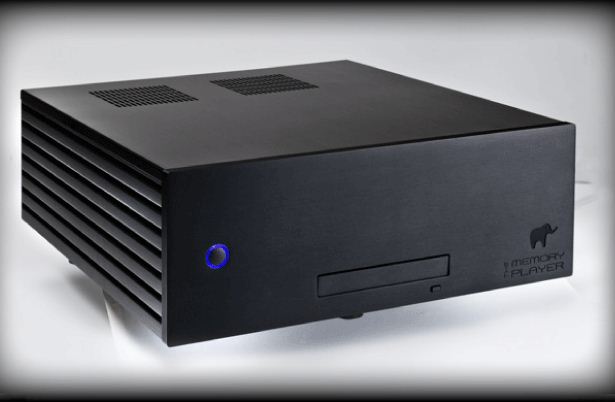
Laufer Teknik Memory Player 64 ($30k): If I remember correctly, our unit was the first available and the first reviewed in the world. In this “here today, gone tomorrow” hobby, the MP has remained since its introduction back in 2006. As remarkable as it performed way back then, it’s both better sounding (substantially so), and easier to operate today. This musical maestro’s utter mastery over a vast genre of recorded music is this machine’s single greatest attribute. (Clement Perry)
Laufer Teknik Memory Player 64 ($9,500-$45,000): I have been lucky to have experienced many of Sam Laufer’s and Mark Porzilli’s versions of their Memory Player over the last ten years. I’ve owned and grown with their 16, 32, and new 64 core Memory Player and have watched the progress morph into the most superb musical source I have known or owned. I refer to it as the “The Swiss Army Knife Jukebox.” The new Memory Player 64 is an extremely versatile musical computer-based server that prides itself on reducing jitter and storing a vast number of musical recordings on its substantial terabyte hard drives. It performs so many things incredibly well that it would take me pages to explain all of its attributes. Sam will configure The Memory Player according to your needs and budget. For me, the Laufer Teknik MP 64, their magnus opus to date, is currently providing me with all of the musical needs and sound quality source I have yet to equal. (Dan Secula)



Merging Technology NADAC + Player and NADAC + Power Active ($13,500 and $9995): The combination of the inclusion of the Roon Core, the DSD capability, the ability to be incorporated into a network via its Ravenna Ethernet protocol, and it’s SOTA audio performance as a digital source sets the MERGING+PLAYER and MERGING+POWER apart from other Powered DACs in the markets place. DSD playback on the Merging Technologies system really floated my boat. In DSD mode, the music being made (and not reproduced) in my room was something I’ve never experienced before. The performance was displayed with overwhelming power and sounded incredibly real and accurate with the back wall completely absent while providing reference level resolution and the rendering of the actual recording space. (Mike Girardi)


Mola Mola Tambaqui DAC ($13k): Bill Parish of GTT Audio Video has sent another winner my way. Compliments of digital wizard Bruno Putzeys of Mola Mola fame, the Tambaqui DAC boasts dual mono chipsets able to handle hi-rez signals (up to 32-bit/3.125MHz). Inputs include S/PDIF coaxial, optical, AES/EBU, USB, HDMI and Ethernet ports with support for up to 32-bit/384kHz PCM and native DSD (up to DSD256). Personally I simply enjoy its natural earthy feel towards anything I manage to throw the Tambaqui’s way. High definition through and through with rock solid detail and imagery without a hint of editorializing. (Review in the works Clement Perry)

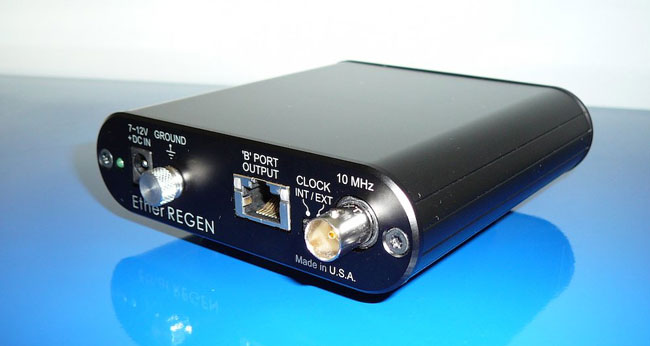
UpTone Audio EtherREGEN ($640): The UpTone Audio EtherREGEN ethernet switch/re-clocker’s unique design includes a series of active, high speed, low jitter differential isolator chips that are used in conjunction with ultra-low jitter differential re-clocking flip flops which is not offered in any other Ethernet switch. As demonstrated in my reviewing system, this design method with the incorporation of an active differential isolation moat results in dual, isolated clock/data/power domains, blockage of all external leakage currents, a reduction in upstream phase-noise fingerprint, and maximal signal integrity. The addition of the EtherRegen has to be the top grade I’ve done to the digital part of my reviewing system including all Ethernet cables, LAN filters, and outboard power supplies. Besides lowering the noise floor and signal compression, enhancing the sense of space and depth, improving the dynamics, and accurately conveying the timbre of each instrument, the EtherREGEN enhances the ictus (the leading edge of beat points that articulate the pulse of the music to the ensemble) like no other device or tweak I have had in my system. Truly a must have component in any system that streams music across an Ethernet cable. (Mike Girardi)

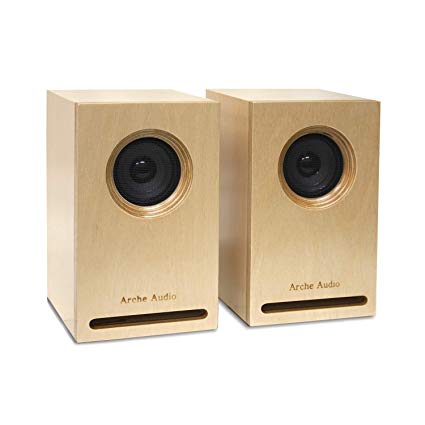
Arche Audio FR2 Desktop Speakers ($299): The simplicity of the Arche Audio FR2 Desktop Speakers semi-folded horn design presents a tonal warmth and naturalness that, to these ears, remains surprisingly free of coloration to this day. With their genuine baltic birch plywood construction and hand-varnished natural finish, the FR2’s are as handsome as they are solid performers, providing an open, natural, engaging and, most importantly, musical essence that makes a near-perfect case for their use on a desktop. That they are surprisingly capable as affordable small monitors in a small space is certainly a plus. (Greg Voth)

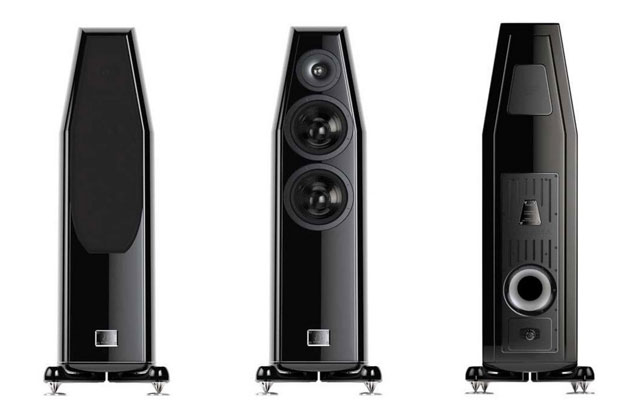
Kharma International – Elegance dBS 7 Signature loudspeakers ($31,250): What started as somewhat of a disappointment (on my part) since my request to the Publisher was for him to possibly secure a pair of full-range loudspeakers for me to review. In this regard – my thinking was along the lines of a larger, full-size, 3-way speaker – something that would hopefully cover the full audio frequency range. When notified that this pair of 2-way speakers would be sent to me, I conceded and agreed that it would possibly be a good starting point and a way to open the door for possibly something larger from this company. Well surprise of surprises and even though I had read several highly favorable reviews of this particular speaker’s smaller sibling, I just didn’t quite imagine that the slightly larger pair sent to me would do the trick.
Fortunately, the Elegance dBS 7S speakers were from the company’s newer line of speakers and what I received was their latest design effort. Specifically, these speakers included a pair of the new and improved midrange/woofer drivers along with special silver wiring used internally. These refinements definitely enhanced the already outstanding performance of the dB7 model that used a single mid/woofer and without the silver wiring. Clearly the performance of these speakers extended the long-standing tradition for this company designing and producing wonderfully musical speakers. In fact, these became my replacement reference speakers after having an opportunity for extensive observation and assessment of their overall performance capabilities and sonic qualities. Highly musical and basically these speakers punched all the right buttons. Bass that is tight, articulate, powerful and actually extends very nicely into the lower regions. Midrange that is open, clear, quite revealing, organic and full of texture. Highs are extended, smooth, sweet and open. Overall – for sure one of the most musically enjoyable speakers I’ve had the pleasure to have in my listening room, ever. See my review for details and a complete description of these wonderful speakers. (Bill Wells)

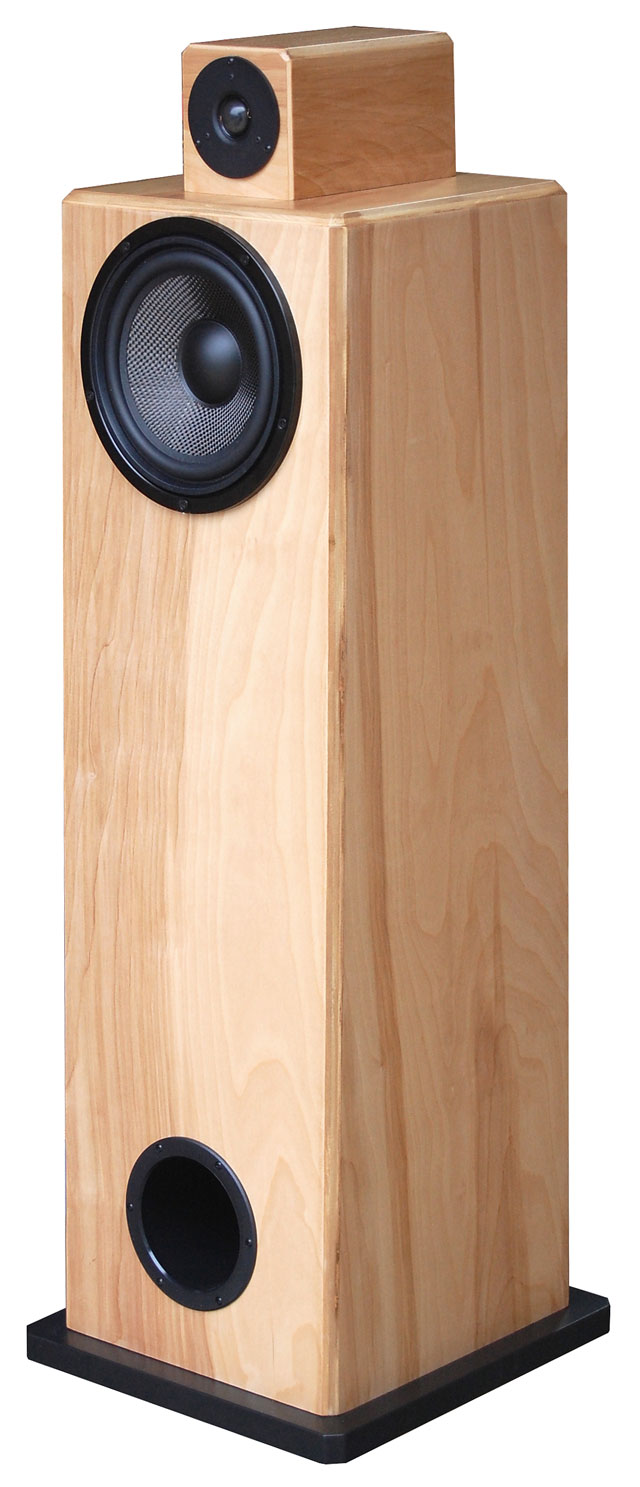
NSMT Loudspeakers Model 100 ($12,000): This rather petite floorstander, 44″ in height and weighing only 82 pounds is Erol Ricketts’ “magnum opus” blending a combination of two time-arrayed natural fiber drivers, no complex crossover between these drivers (just a single capacitor), a built-in 200 watt amplifier to drive an internally mounted 10″ driver that is setup as a bass coupler, and are built out of birch plywood, not MDF board. The Model 100 offers the purity of a single-driver design without the shortcomings of a rolled-off high end. It also creates a wrap-around holographic immersion that puts you in the time/place of the recording (think MBL Radialstrahler E 101 MKII), and produces deep, powerful, taut bass and sub-sonics to pressure your acoustic space with ease. (Terry London)


Raidho D5.1 ($236,000-$265,000/pair): These beautiful, tall, slim, speakers provide, in full measure, all of the positive characteristics in a great loudspeaker that we audiophiles long for. There is a natural wholeness, speed, clarity, and seamless characteristic, through the entire frequency range, that sounds musically, “just right.” Delicate micro and dynamic macro sounds are produced easily, with an enormous soundstage, accurate spatial cues, realistic harmonics and an emotional impact. This is an incredible “wow” product. (Dan Secula)

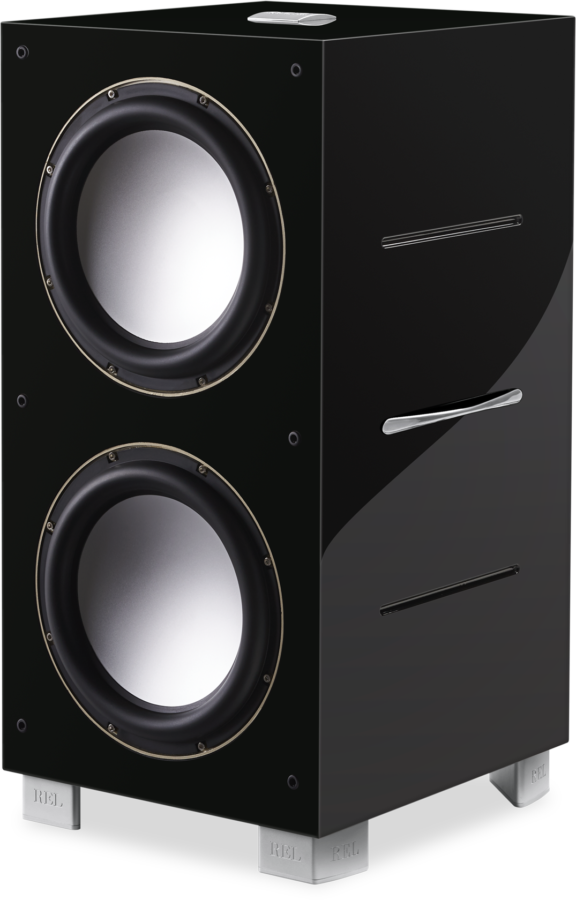
“Product of the Decade?” When Clement proposed this award, I was flummoxed. What did it mean? The best product to be produced between 2010 and 2020? Okay, but best new never-seen-before product, or best of an existing product type? I finally concluded that, to be a worthy of an accolade such as Product of the Decade, a product will not only have to be based on existing technology that was developed way before this past decade, but which culminated in something that was designed and produced in this period that embodies the best of all the iterations before it, but also broke new ground in doing so. And this product can only be….
REL 212/SE sub-woofers: Note that I used the plural form – specifically, my nomination goes to a stereo pair of these astounding subs. While my room cannot be described as big by any stretch of the imagination, I managed to get deep, powerful, clean and voluptuous bass from two of these RELs when used in conjunction with Voxativ Ampeggio horn loudspeakers. They fill-in the void where the Ampeggios leave off, but do so without (a) calling any attention to themselves, (b) any perceptible hand-off or cutover issues, and (c) any overloading of the room despite the huge SPL they are putting out. As with all REL subs, their primary purpose is to serve the music, not contribute trouser-flapping or earth-moving low frequency effects (which they can do, if this is what you want). They integrate so well with main speaker system that I often forgot their existence, despite the fact that they are rather visually imposing and take up quite a bit of real estate in an already crowded listening area.
If I only have one word to describe them, it would be…”magical”. (Stephen Yan)


Tekton Encore loudspeakers: ($6,000): Much smaller than the Ulfberhts and bigger than the Double Impacts. The Encores as smooth as a babies behind in their midband, yet can kick like a mule when it comes to bass impact. Boasting an efficiency of nearly 100dB, they’re super versatile with regard to amplifier selection. Easy to setup, they do prefer a decent-sized room as their remarkable dynamic prowess require ample space. At the reduced asking price of $6k (originally $8k), they’re a steal for anyone who wants perhaps the best loudspeaker for the money I know of and have heard. (Clement Perry/ Moreno Mitchell)

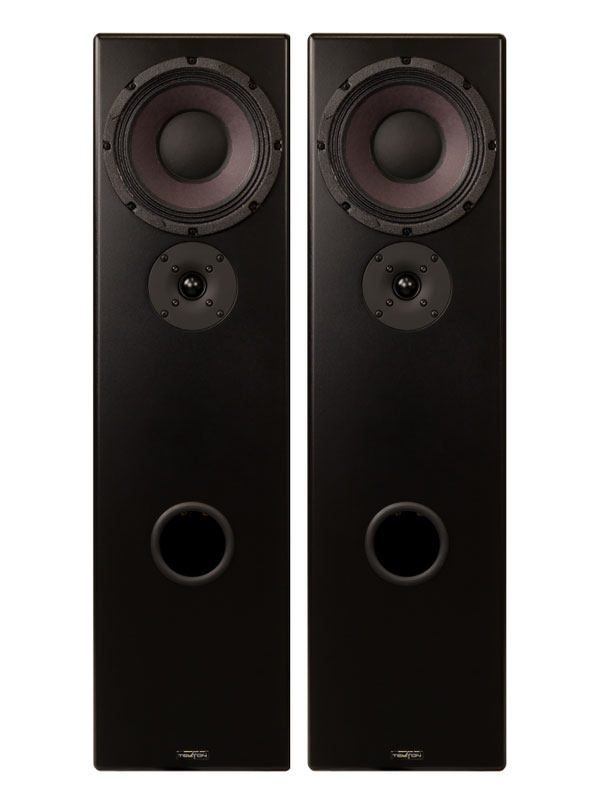
Tekton M-Lore Speakers ($575.00/pair): My Ceado E37S espresso grinder is (much) better than my Baratza; and it’s three times the price. I have a classic James Bond style Omega watch that’s handsomer and better made than my Seiko; and it’s ten times the price (even used). By contrast, Tekton’s M-Lore speakers were, with my system and in my room, musically equal to or better than any of the myriad speakers I’ve ever owned or heard up to $5,000 or $6,000 a pair. Fast, punchy, tonally right on, easy to drive, open and musical across all genres, no product in my life of any kind or sort in any category of consumer good whatsoever has ever impressed me so much for so little. Product of the decade? Absolutely. Product of a lifetime? For sure! (David Abramson)

Tekton Design MOAB/Encore Hybrid ($6,000/pair – no photo): What do you get when you take a pair of Tekton’s already wonderfully built MOAB speakers, put them in Tekton Encore cabinets, and then re-align the woofers (one above the other at the bottom of the cabinet instead of one at the top and one at the bottom)? You get a speaker that is more explosively dynamic, has a much larger soundstage and offers a bit more emotionally engaging music. The MOABs in the Encore body (which Eric Alexander now offers), provides ample bass into my space with their two 12-inch pro-woofers. They also use beryllium tweeters to add to the speaker’s ability to push the envelope of the mid/high frequency extremes.
(Mike Wright)


Tekton Design Ulfberht Speaker (Price just lowered to $9,000): Eric Alexander took his breakthrough design first used in the Double Impact speaker and brought it to his very large, over 220 pounds, seven feet tall, 21 driver reference Ulfberht model. I consider this one of the great speakers of the last decade because of its ratio of performance-to-build quality and its unbelievable price (now under $10,000 in a standard finish), despite the fact that it competes with speakers costing more than $80K. This speaker brings brilliant transparency to the midrange allowing all the micro-details to be easily heard. Thunderous bass and overall dynamics gives this speaker a sense of “aliveness” found in real performances, and still images like a two-way monitor, throwing a precise, layered, and panoramic soundstage, along with accurate image size and location on that soundstage. The only caveat; make sure your acoustic space is large enough to let these monoliths breath in order to reach their maximum potential in your system. (Terry London and Ron Cook)

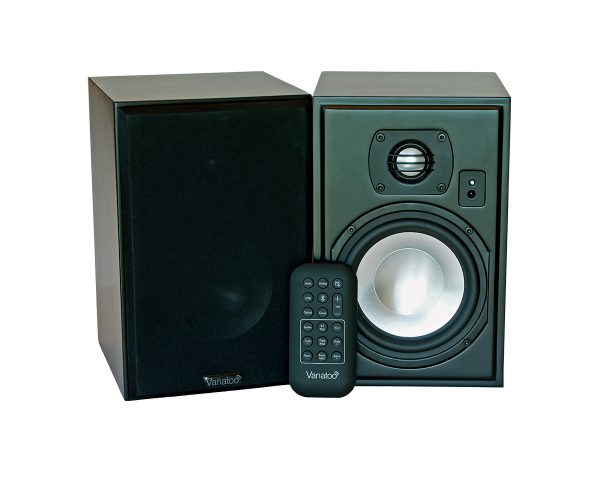
Vanatoo’s Transparent One Encore ($599): In average-sized spaces, the Vanatoo Transparent One Encore’s sound impressive, period. Their easy wireless device connectivity and feature set will tickle many a user and their transparent, musical sound quality will certainly please audiophiles. My wife asked their price and thought the Transparent One Encore’s a good value for the great sound they produced. If having good sound at the computer is a necessity in your world, you’ll dig the Encores and, while most people might not use them in a large space, don’t be afraid to try them in one – their sub-out feature may make for a surprising larger room experience. Vanatoo makes demo of the Transparent One Encores easy, with a 30 day return policy. You pay the return shipping… but, something tells me you won’t return them, once heard these babies. (Greg Voth)
Stereo Times Masthead
Publisher/Founder
Clement Perry
Editor
Dave Thomas
Senior Editors
Frank Alles, Mike Girardi, Russell Lichter, Terry London, Moreno Mitchell, Paul Szabady, Bill Wells, Mike Wright, and Stephen Yan,
Current Contributors
David Abramson, Tim Barrall, Dave Allison, Ron Cook, Lewis Dardick, John Hoffman, Dan Secula, Don Shaulis, Greg Simmons, Eric Teh, Greg Voth, Richard Willie, Ed Van Winkle, Rob Dockery, Richard Doron, and Daveed Turek
Site Management Clement Perry
Ad Designer: Martin Perry





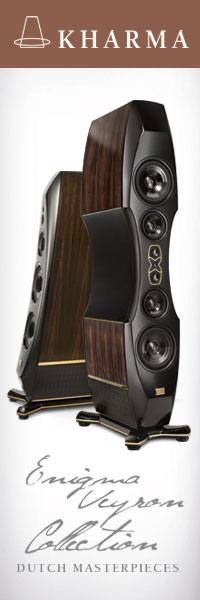
Be the first to comment on: Most Wanted Components of the Decade: Digital